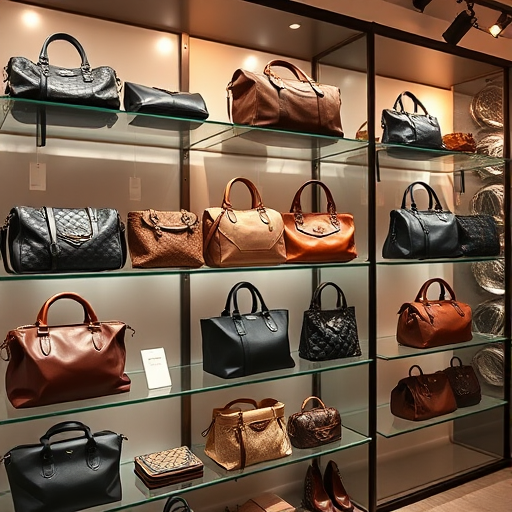If you’ve ever wondered how much you’ll actually pocket when selling your items at a consignment shop, you’re not alone. Understanding what percentage most consignment shops take is a common concern for anyone hoping to maximize their earnings. With fees and commission rates that can vary widely from store to store, navigating consignment shop commission rates can feel overwhelming, especially for newcomers. Choosing the right shop and grasping consignment shop fees can greatly influence your experience when deciding where to sell your secondhand treasures. In this article, we’ll break down the typical commission percentages, highlight what affects them, and offer tips for selecting a consignment partner that fits your needs, helping you make informed choices and get the best value for your items.
What Percentage Do Most Consignment Shops Take from Sellers?
When you’re looking to declutter and earn some money, consignment shops offer a convenient option. A crucial question arises: what percentage do they take? Generally, most consignment shops operate on a commission basis, splitting the sale price with you, the seller. The most common consignment split is 40/60, meaning the shop retains 40% of the selling price while you receive 60%. However, this percentage can vary considerably based on factors like the item’s brand, condition, and the shop’s overall pricing structure. Some shops may offer a 50/50 split for more desirable items, while others may range between 30/70 to 60/40. Understanding these percentages is essential for maximizing your earnings when choosing to consign.
Understanding Consignment Splits in Detail
The Standard Commission Structure
The most prevalent commission structure in consignment shops revolves around a split of the final sale price. This model incentivizes the shop to actively market and sell your items, as their earnings are directly linked to successful sales. Typically, a standard split grants the consignor (you) the larger portion, usually around 60%, while the shop retains 40% to cover operational costs such as staffing, marketing, and maintaining the store. This arrangement creates a mutually beneficial relationship where both parties share in the potential profit.
Impact of Item Condition on Commission
The condition of your items significantly affects the commission percentage a consignment shop might offer. Items in excellent or like-new condition often command a higher commission split, potentially reaching 60-70% in your favor. In contrast, items with noticeable wear and tear, slight damage, or outdated styles typically receive a lower split, often closer to 40-50%. Shops must account for the extra effort required to restore or sell items that are not in pristine condition.
Branding and Demand as Factors
Highly sought-after brands and items in current demand often qualify for more favorable commission rates. Consignment shops recognize these items as easier to sell quickly and at a good price, justifying a larger portion of the profit being given back to the seller. Luxury brands, designer pieces, or trending products are frequently assigned higher commission splits compared to less popular or generic items. This reflects the perceived value and marketability of the consignment.
Negotiation Potential and Shop Policies
While many shops adhere to set commission structures, there’s often room for negotiation, particularly for high-value items or multiple consignments. Understanding the shop’s policies regarding consignment duration, pricing, and markdown schedules is crucial. Be prepared to discuss the value of your items and ask about opportunities for a more favorable split, especially if you’re a repeat customer or offering unique, high-demand pieces. Transparency and open communication are essential.
What Percentage Do Consignment Shops Take for Different Item Types?
Consignment shop commission rates aren’t one-size-fits-all; they are often tiered based on the type of item you’re selling. Higher-end items like designer clothing and jewelry usually command a better split for the consignor compared to everyday apparel or household goods. Clothing typically falls within the 40-60% range for you, while furniture may be closer to 30-50% due to the logistics and space needed to display it. Specialty items, such as sporting equipment or baby gear, also have varying rates. Some shops even offer different rates depending on the season—consider higher commissions for winter coats in the fall versus spring. It’s best to inquire directly about the specific percentage for your items before committing to consignment.
How Do Consignment Shop Commission Rates Compare to Other Selling Options?
When deciding how to sell your unwanted items, it’s beneficial to compare consignment shop commission rates with alternative options. Selling directly to buyers online, through platforms like eBay or Facebook Marketplace, allows you to keep 100% of the sale price but requires more effort in listing, communication, and shipping. Pawn shops provide immediate cash but typically offer significantly lower percentages of the item’s value. Garage sales are quick and easy but usually yield lower prices. Consignment strikes a balance between convenience and potential profit, generally netting you more than a pawn shop or garage sale while requiring less work than online selling, although a commission of the final sale price is taken. Ultimately, the ideal option depends on your timeline, desired profit, and willingness to manage the selling process yourself.
What Percentage Do High-End Consignment Shops Typically Take?
High-end consignment shops, which specialize in luxury brands and designer items, generally have a different commission structure than standard consignment stores. Because they deal with higher-value items, they often operate with a more competitive split, typically ranging from 50% to 70% for the seller. This strategy is designed to attract consignors offering valuable merchandise. However, these shops typically enforce stricter acceptance criteria, focusing on pristine condition, current styles, and highly recognizable brands. They may also require longer consignment periods and implement more significant markdowns if items don’t sell promptly. The higher commission reflects the specialized expertise and marketing efforts required to effectively sell luxury goods.
How Can You Negotiate the Percentage a Consignment Shop Takes?
Negotiating a consignment percentage is often possible, especially if you’re offering valuable or in-demand items. Start by researching comparable items sold at the shop to understand their pricing and potential commission. Highlight the excellent condition of your items and any unique features that could enhance their appeal. If you’re consigning a substantial quantity of items, leverage that as a negotiating point for a better split. Don’t hesitate to respectfully ask if they’re willing to adjust the percentage, particularly if you have prior experience with consignment or are a repeat customer. Building a friendly rapport with the shop owner or manager can also increase your chances of a favorable outcome.
What Percentage Do Consignment Shops Take if Items Don’t Sell?
A common practice among consignment shops is to adjust the commission percentage if an item doesn’t sell within a specified timeframe. After the initial consignment period, usually 30-60 days, shops often automatically reduce the price, which in turn affects your commission. Some shops will initiate a final markdown period where the percentage split shifts further in their favor, potentially dropping to 30/70 or may even take the item outright after a certain date. It’s vital to understand the shop’s markdown policy prior to consigning to avoid any surprises. Be sure to inquire about options like retrieving unsold items, donating them on your behalf, or agreeing to further markdowns.
How Do Consignment Shops Determine What Percentage to Take?
Consignment shops calculate their commission percentage through various factors that aim to balance fair compensation for both the shop and the consignor. These considerations include the item’s brand recognition, condition, current market value, and demand. Shops also factor in their overhead costs like rent, staffing, marketing, and insurance, which must be covered by their portion of the sales. Additionally, they assess how easily the item can sell—specialty or high-demand items often warrant higher commissions, while harder-to-sell items might have lower rates. Ultimately, the goal is to establish a commission structure that incentivizes both parties to collaborate towards a successful sale.
Common Mistakes and Expert Tips for Consignment Success
Don’t Accept the First Offer
It’s tempting to accept the first commission percentage offered, but taking a moment to inquire about flexibility can pay off significantly. Ask whether the rate is negotiable, especially if you’re bringing in high-value items or a large collection. A polite inquiry rarely hurts and could secure you a more favorable split.
Overlooking the Consignment Agreement
Always thoroughly read and understand the consignment agreement prior to signing. Pay particular attention to the duration of the consignment period, markdown policies, what happens with unsold items, and how payment is processed. Knowing your rights and responsibilities is essential.
Failing to Assess Item Condition Honestly
Be realistic about the condition of your items. Shops are more inclined to offer a better commission for items that are clean, well-maintained, and in good repair. Addressing minor issues like missing buttons or stains before bringing your items in can help increase their value.
Ignoring Seasonal Demand
Timing is crucial in consignment. Consigning winter coats in the summer or swimwear in the winter drastically reduces your chances of a sale. Research seasonal trends and time your consignment accordingly to maximize your earnings.
Not Researching the Shop’s Target Market
Different consignment shops cater to different audiences. Ensure the shop aligns with the style and price point of your items. Consigning designer clothing to a shop specializing in everyday wear may not yield the best results. Focus on shops that are well-suited to your inventory.
Conclusion
Knowing how commission structures work in consignment shops can significantly enhance your selling experience, balancing convenience with profitability. Prioritizing high-demand items, negotiating splits, and timing your consignment for seasonal trends can yield greater returns. Adopting these insights empowers you to confidently navigate the consignment world, ensuring that the items you share today provide joy and financial rewards for years to come.

